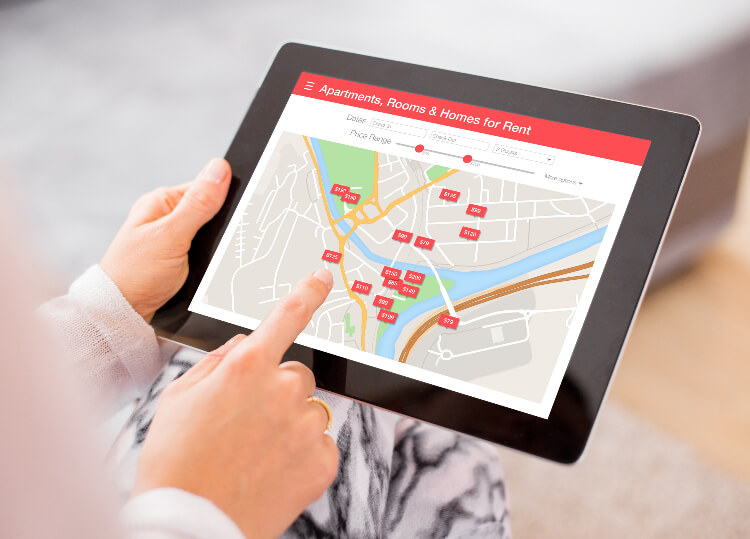As a property owner, figuring out how much to charge for rent on a vacant unit or one that is up for renewal is one of the most important things you do.
In general, your goal is to charge enough rent to cover your costs and make a profit while staying competitive with other rental properties in your area.
By following these tips, you can ensure you’re charging the right amount for rent.
Key takeaways
- Determine how much rent to charge by accounting for property location, size, and amenities.
- Research comparable properties in your area for pricing guidance.
- Balance covering costs and making a profit.
Considerations for setting rent prices
When setting rent prices, consider the property’s location, the unit’s size, and the amenities included. Additionally, market conditions can impact how much rent to charge.
Location
In general, properties located in more desirable areas will command higher rents than those in less desirable areas. Tenants are willing to pay more for the convenience and amenities that come with living in a desirable neighborhood.
For landlords, this means that properties in prime locations can be a more profitable investment than those in less desirable areas. However, it is important to keep in mind that the rent a landlord charges must be in line with similar properties in the area in order to attract prospective tenants.
You can maximize profits while still charging tenants a fair rent.
Size of property
Landlords and real estate investors typically look at the number of bedrooms and bathrooms, as well as square footage, when setting rent prices. Larger units are typically more expensive to maintain and should command higher rent.
There are always exceptions, so it is up to the landlord or property manager to decide how much to charge for a specific unit.
Amenities
A property with a swimming pool or hot tub may warrant a higher monthly rent than one without these features. Similarly, a property with private laundry or an attached garage may command higher rent.
Ultimately, the decision will come down to an assessment of the market value of the property and its amenities.
Market and property conditions
In general, if the demand for rental units is high and there are few units available, you’ll be able to charge higher rent. On the other hand, if there is an oversupply of rentals on the market, you may need to lower the rent to attract tenants.
The condition of your property can also impact the amount of rent you can charge.

Researching comparable properties in your area
Start by searching online listings or contacting a local real estate agent or property management company. Once you’ve found some similar properties, note the prices they charge and use this information to help you set your own rental rate.
Some online tools landlords and property managers can use to research rent comparables include:
- Realtor.com
- Trulia
- Zillow Rent Zestimate
- Rentometer
Factor in costs like mortgage payments, insurance, taxes, and repairs and maintenance. Set aside some money for vacancy rates (typically about 5% to 10%). Review your prices regularly and make adjustments as needed to keep occupancy levels high and return on investment robust.
Collecting rent from your tenants
There are a few ways that landlords can collect rent from tenants. Perhaps the most traditional method is to collect rent payments via check each month. However, this method can be inconvenient for landlords and tenants. For instance, the tenant might forget to write a check and mail it on time, or the landlord might have to go to the bank to deposit the check.
Another option for collecting rent is to set up an online rent payment system. This can be very convenient for both parties involved. The tenant can simply log in and make a payment, and the landlord can receive the funds electronically.
There are also a few benefits of collecting rent payments online. For example, it can help to automate the rent collection process, and it can also provide a paper trail in case there are any disputes down the road.
One good option to consider e is online rent collection from Stessa, a Roofstock company. This tool makes it easy for tenants to pay on time, and it automates key tasks like deposits, receipts, and accounting. Stessa’s online rent collection is a win-win, and it’s free for both landlords and tenants.
Real estate investors also use Stessa to easily maximize profits through smart money management, automated income and expense tracking, personalized reporting, and more. Sign up for a free account here.
Summary of tips for setting the right rent price
When it comes to setting a rent price, landlords have to strike a delicate balance. They need to charge enough to cover their costs and make a profit, but not so much that the unit sits vacant for long periods of time.
So how do you determine the right rent price? Here are a few tips to keep in mind:
- Know your market. Do some research to find out what other similar units are renting for in your area. This will give you a good starting point for setting your own prices.
- Consider your costs. Factor in mortgage payments, insurance, taxes, and repairs and maintenance. Set aside some money for vacancy rates (typically around 5% to 10%).
- Review your prices regularly. Rent prices can change over time, so reviewing your prices and making adjustments as needed is essential. This will help ensure that you’re always charging a fair and competitive rent that will help keep occupancy levels high and return on investment robust.






